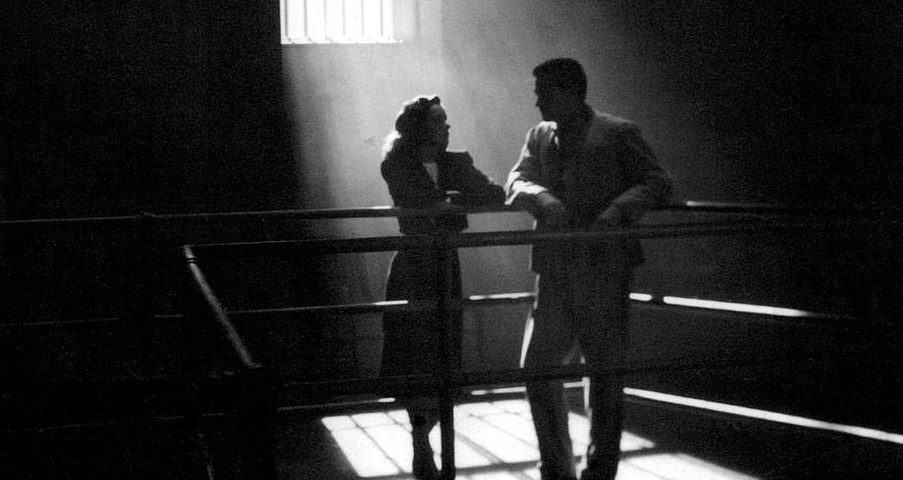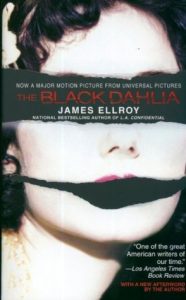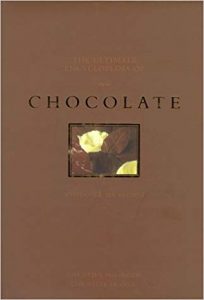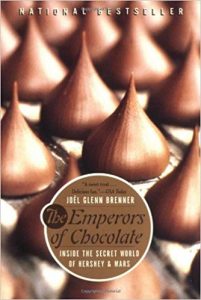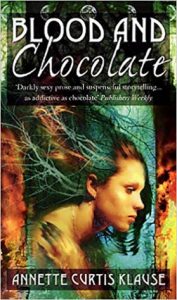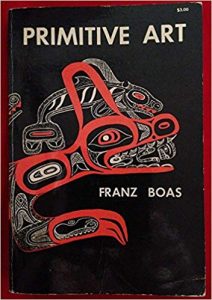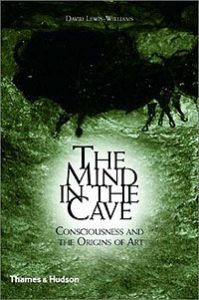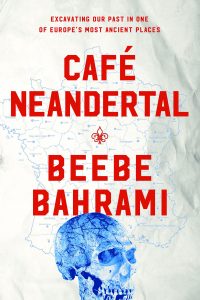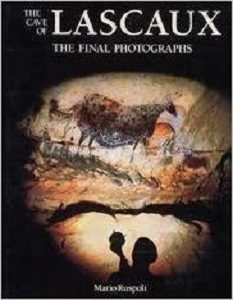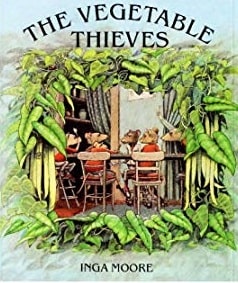
The books that made Library staff readers
1 July 2019
The books we most want to read this summer
12 July 2019The Library is pleased to present the Culture Picks for the month of July, curated, researched and written by Library volunteer Mike Duffy.
For July, the Library suggests three very different exhibitions selected and reviewed by Library volunteer Mike Duffy. In the deep, dark hearts of big cities and of those who dwell in them, the mysteries of the human heart, the menace of those you don’t know and the mayhem wrought by those you know too well are the themes of films, novels and short stories labeled noir and those themes are beautifully displayed in the excellent exhibits of photography at La Maison européenne de la photographie — Henry Wessel — A Dark Thread and Fil Noir. In the deep recesses of the history of the earth and the remnants left by various peoples, Centre Pompidou finds art and artifacts, tens of thousands of years old, varied and beautiful, along with art inspired by those fragments of pre-writing cultures in the expansive exhibition Prehistory — A Modern Enigma. Finally, In the deep mythic, religious and indigenous cultures of Mexico and Central America, chocolate plays a central role as it does at Le Musée du Chocolat, an entertaining, educational experience for the entire family.
As always, we’ve selected books from our collection to go with the cultural visits. These books are displayed in the Members’ Lounge and available to be checked out.
Guest blogger: Mike Duffy lives in Paris following his retirement from a career in university teaching and management. He spent his first 30 years in Pennsylvania (born in Pittsburgh, college and grad school in Philadelphia), then spent a bit more than that in California where he taught accounting and finance at the Universities of California (Berkeley), Southern California and San Francisco. He can now be found in art museums, historic sites, and concert halls throughout the city.
HENRY WESSEL: A DARK THREAD
MAISON EUROPEENNE DE LA PHOTOGRAPHIE
Through 25 August 2019
Of the tens of thousands of photos Henry Wessel took over a 40 year career, he selected an outstanding few to tease, tickle and, perhaps, torment the viewer, and MEP presents these in three intriguing sets: Incidents, Sunset Park and A Dark Thread. These black-and-white beauties illustrate his see-shoot instinct, finely honed over a lifetime, and showcase America, mostly California, from the late 1960s on, with affection or at least attraction, with fear or at least foreboding, and while black-and-white, mostly they are the brooding noir of novels, short stories and films.
Henry Wessel (1942-2018) does not invite you into his pictures. No one looks out at you from any of these photos to engage or seduce you. You are an observer, outside the frame, not acknowledged in any way by those inside. He does invite you to create (your own) narratives. In the first set of photographs, Incidents: Who are these people? What are they doing? Or often, what have they done? From his entire photographic archive, Wessel chose 27 to form a book called Incidents, and while the book had a title, none of the individual works do. There is Incident n° 2, for example, an older fellow wearing a hat and trench coat, walking in one direction in a park while a dog walks in the opposite. Its fine composition shows in the sunlight coming in from the right, shadowing half of the man’s face and body and creating dark shades on the ground, across the obtuse angles created by the paved path, the lawn and a row of trees. What has occurred? Is there a relationship between the dog and the man? In a fine picture of a young woman and others looking out from a car window, what strange event or person is attracting their disturbed, puzzled looks?
In the second part, Sunset Park, the photos feature the rather plain homes built in Santa Monica, California for aircraft factory workers during World War II. In Wessel’s pictures of these homes, more houses perhaps than homes, taken between the 3:33 A.M. and the dawn, there are no people; there is only a porch light burning or, maybe, one in one window. Is someone expected or are the lights to deter prowlers? These are eery, suggestive of nighttime fears, strange, almost alien, and at the same time, carefully composed and wonderfully developed to highlight the lights and shadows.
Wessel believed that a photograph makes a reality which does not exist without the photo. He took thousands of photos and mostly did not look at contact sheets for a year or more. He wanted to separate completely the story that the photo brought into reality from the reality which he photographed. In the third part of this exhibition, A Dark Thread, are photographs selected by Wessel who then invited fiction writers to create stories. He died before this project could come to fruition, but his pictures are here and you may create their stories from the photos of a car sitting in the desert or parked while its driver makes a call from a phone booth seemingly in the middle of nowhere or of a woman sunbathing or boozing on a bed, hints of the femmes fatales that populate Wessel’s favorite detective and noir stories. Subject marries technique again and again in these creative works with definite lines, often stark presentations, the same spare language that is the dialog of noir characters. A few pieces come from beyond California. Among those, one standout is Sewickley, Pennsylvania, July 4th, 1979 showing the finely dressed young children of the wealthy being handed sparklers while a group of working class youths look on. If they were only a few years older, this would be the prelude to a gang rumble and the contrast between the rather bright white clothing of the privileged and the duller tones of the others’ garb lets us develop that story. In another, Pennsylvania, 1968, the bottom third is crowded with half of a white Lincoln Continental, a high pile of dirty snow, a woman and a child — all mirrored in a pool of slush and water— while most of the photo is of gray sky bifurcated by a four-headed, modern, almost science-fiction, parking lot lamppost. There is so much in the black, gray, white, dull, shiny surfaces — so much in the woman’s puzzled look at the child, so much of a story waiting to be created.
Like painters who migrated from Northern Europe to Southern France, Wessel was seduced by a new, wondrous light when he moved from New Jersey to California, and he found that light through automobile windows, on desert roads, in beach towns. He said that he spent his career trying to get exactly that light in photographs and it was the work of both the finger on the shutter of his (only, ever) Leica and the hands in the darkroom that gave him the perfect result so many times. His skillful eye was matched by his skill with chemical solutions and paper. The light playing on and through a canopy of leaves in Incident n°1 or shading through bushes and Palm trees in Santa Monica or glaring on sand and water shimmers throughout Wessel’s work and the shadows created by that light define very specific, very clear images.
In displaying three sets of the works of Henry Wessel — Incidents, Sunset Park, and A Dark Thread — MEP continues its exploration of photography of the 20th and 21st centuries, in this case of a major American photographer and teacher of photography who believed in the value of snapping the shutter without thinking — “your eyes far ahead of your thoughts,” he once said. He was a master picture taker and developer, using great technical skill to make light shine, make shadows dark, make the contrast clear, make shapes and shades present just what he saw. MEP invites you to enjoy these exceptional photos which display the amazing artistry and careful craft of Henry Wessel.
Recommended books from the Library collection:
CHOCO STORY
LE MUSEE DU CHOCOLAT
On permanent display
More than 1,000 items — pots, spoons, cups — graphics and explanations about the origins, science, geography, culture, tastes and economics of chocolate fill the three floors of Le Musée du Chocolat, and need I mention that you can taste a lot of chocolate there? In addition, there are workshops, treasure hunts and more to entertain an entire family.
This is an educational enterprise with easy to understand signs in French and English which begins in the mythic past when the gods shared their drink with the lucky peoples of Mexico and Central America. The development from a rather bitter drink (which Columbus ignored because he thought it didn’t taste very good) through its transformation to the drink of the elite in European courts and its change back to a food of the gods when someone realized you could add sugar. The move from beverage to handmade confections to mass produced chocolate bars is chronicled through short texts and the amazing collection started by Belgian Eddy Van Belle. Oh, and you can taste chocolate prepared in the style of each era as part of the exhibits.
In addition to displays, the Museum offers demonstrations and fun workshops for individuals, families and groups. (Reservations needed; English available) One workshop open to those as young as six involves dipping marshmallows, orange peel and the like in dark or milk chocolate and decorating the pieces with candies; participants also learn to swirl chocolates together in their own imaginative designs to create pretty chocolate bars. There may be seasonal or thematic workshops offered as well, e.g., Halloween or Easter or football championships. The workshops let you prepare your own treats to take home so you can share tastes of chocolate with your family and friends.
Le Musée du Chocolate is one of at least four around the world incorporating the collections of Van Belle and sponsored by Belgian chocolatier Belcolade. And did I mention that you can taste the chocolate?
PREHISTORY — A MODERN ENIGMA
CENTRE POMPIDOU
Through 16 September 2019
Prehistory — the entire history of the earth before the invention of writing — covers a lot and so does the inventive and intriguing exhibition Prehistory at the Centre Pompidou. Starting in the 19th Century, very different ideas emerged about the planet and its people from science (evolution; geological time; anthropology of pre-writing cultures; planetary motion) and from discoveries (cave drawings; 13,000 year old carvings; truly ancient skeletal remains). Notions about culture, art, creativity were upended as evidence mounted that painting, drawing and sculpture preceded writing (the introduction of the latter marking the boundary between prehistory and history) and that artistic achievements of eras that preceded any time which had been thought of as civilized were widespread, interesting and, indeed, beautiful. This exhibition mixes art forms and eras to present the discoveries, European and American art directly shaped by those discoveries and art which builds on related themes such as the physical structure of the earth. It remains eye-opening — the cave drawings in Spain, a human figure in France’s Dordogne and the appearance in or near the human family tree of Neanderthals — eye-opening in the sense that it reminds us that what may be taken as commonplace today was not so long ago starling and unsettling.
It was explosive, the notion that people could create art, symbolic representation, beauty without written language, perhaps even without being in a clear biological line with European ethnic groups. This came at a time when science was at the fore in changing perceptions, but pseudoscience also grew alongside in, for example, suspect and insidious “race science” and keeping non-Europeans in inferior classifications was essential to empire, economic exploitation and the continuing social practices which mimicked outlawed slavery. (The person who discovered the remains of someone we now call Neanderthal wanted the scientific name to be homo stupidus.)
European artists, though, were looking for inspiration outside of the traditional canon of Western art and many were excited, even stunned, by the novelty, the simplicity to the point of abstraction, the expert craftsmanship and the outstanding materials of many pieces, especially those that came to be named Venus of this place or that in a complete Euro-centric projection on to peoples who were not (could not be) understood from a distance of 15,000, 30,000 or more years without the existence of written records. One of the most beautiful of these figures is displayed alone, Venus of Lespugue. This very small, 23,000 year old representation of a female is one of the many (but not all) that were full-figured nudes. The discoverer’s projection starts with the use of the Greek name, Venus, and with the implied association with fertility and sexuality. The Greek and later European versions covered themselves with a carefully placed hand, while many of the prehistoric figures are directly, openly seen, with breasts and sex exaggerated, leading one discoverer to name his find Immodest Venus. Again, though, projection and speculation fuel the naming and descriptions for with no writing we cannot know if the more than 200 discovered are fertility figures, goddesses, mother-figures, religious, mythic, lucky charms or what. While Alberto Giacometti’s iconic thin, spare sculptures of women, often very small, would not appear until the Post-War period (a 1950 example is on display), he was drawing and sculpting prehistoric figures in 1929 as shown here and later twentieth century works by sculptors Barbara Hepworth and Louise Bourgeois among others show the on-going response to the clean-lines found in stone objects left behind from tens of thousands of years ago. The many small display boxes permit you to walk around both prehistoric and modern pieces and allow an association between pieces hanging on the wall with three-dimensional works, some especially adding an unexpected richness, e.g., the great photographer of 1930’s Paris Brassaï is represented not only by photography but also by sculptures from the late 1940s and 1950s and the politically engaged artist and video maker Joseph Beuys is seen through four watercolors and four sculpted reliefs.
Painters, too, responded the the stimulus provided by new images of beauty, the spare lines of a cave dweller’s reduction of an animal and the enigmatic figures, females along with an occasional hunter. The range of works displayed is wonderful, but clearly the early 20th Century saw a great flourishing of art inspired by prehistoric examples. Picasso, of course, but also Giorgio De Chirico, Max Ernst, Paul Klee — often in works that differ from their currently best known pieces—linked themselves to forms and ideas garnered from viewing the discoveries of sculpted pieces and rock drawings. There are a number of handprints, like those found in some caves, in colorful and fun works by Wassily Kandinsky, Richard Long, A.R. Penck, Alberto Giacometti and Joan Miró. A strength of the exhibition is to make us aware of just how widespread was the information, the interest, the images of prehistoric objects and the fantasized recreations of life before there were written records. The exhibition includes dozens of examples of magazine stories, exhibitions, newspaper articles, films, popular novels, world fair exhibits — some serious and scholarly, some comic and perhaps condescending — showing that artists and everyone else could be exposed to the amazing finds that came from the middle of the 19th Century onward.
From the initial greeting by the skull of Cro-Magnon man found in the Dordogne in 1868 this big, varied exhibition allows you to dip in and out, stop, scan or study what has been found of prehistoric sculpture and drawing, what artists up to today have made of the aesthetic insights of those long ago creators, what re-thinking of our own place in the long history of the planet takes place when finding artistic representation created before writing was invented. There is a lot a beautiful and interesting art, a lot of provocation about culture, about the appearance and disappearance of peoples before there was history and, perhaps, after.

